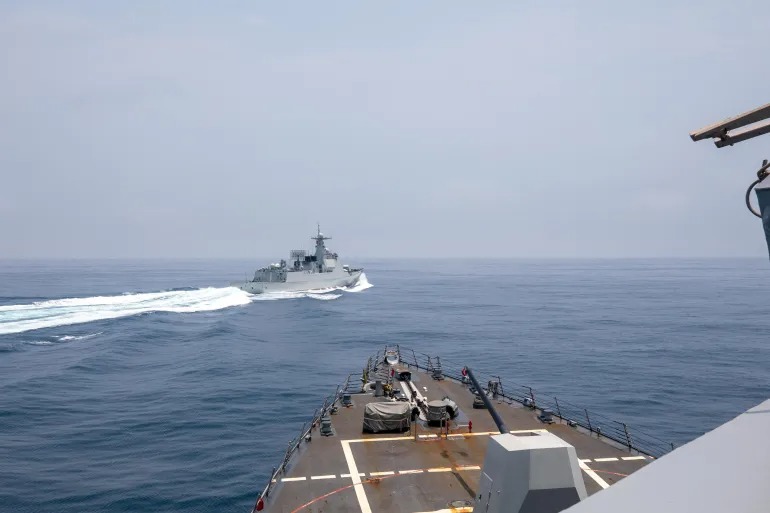China’s People’s Liberation Army has escalated tensions in the Taiwan Strait by conducting extensive air and sea military exercises around Taiwan, following a recent visit by Taiwan’s Vice President William Lai to the United States. The drills, perceived as a “stern warning” by China, have raised concerns about the region’s stability and the potential for further escalation.
China’s Military Exercises Aimed at Sending a Warning Message
China’s People’s Liberation Army (PLA) has commenced a series of coordinated air and sea military exercises around Taiwan in a move that experts see as a direct response to Vice President William Lai’s recent visit to the United States. These exercises, focused on ship-aircraft coordination and combat readiness, serve as a potent signal to both the island’s separatist forces and foreign elements.
Taiwan Responds with Vigilance and Determination
In a swift response, Taiwan’s defense ministry condemned China’s military maneuvers as a display of “militaristic mentality.” Taiwan deployed combat aircraft, land-based missile systems, and naval vessels to closely monitor the PLA’s activities. With a resolute determination to safeguard national security, Taiwan’s leaders emphasized their ability and confidence to counter any potential threats.
International Repercussions and Regional Dynamics
The recent military drills come in the wake of heightened tensions in the region. The United States, Japan, and South Korea have jointly criticized China’s behavior in the South China Sea, establishing a trilateral partnership to strengthen regional security and promote common prosperity. China’s military exercises coincide with these developments, signaling a complex power play in the Indo-Pacific.
In the statement issued from Camp David, where the trilateral partnership was solidified, US President Joe Biden, South Korea’s President Yoon Suk-yeol, and Japanese Prime Minister Fumio Kishida expressed their collective resolve to counter Beijing’s “dangerous and aggressive” actions. China’s increasing military presence in the region is seen as a direct response to perceived collusion between Taipei and Washington.
Throughout these developments, Taiwan’s Vice President William Lai remains a key figure, with his visit to the United States serving as a focal point for China’s recent military exercises. Lai’s transit through the US has been exploited by China as a pretext to exhibit its military might, potentially influencing Taiwanese voters in the upcoming presidential elections.
China’s foreign ministry publicly voiced its opposition to any interaction with “Taiwan independence separatists” in the United States, further underscoring the deep-rooted political tensions between the two entities. As both sides continue to engage in geopolitical maneuvering, the Taiwan Strait remains a critical flashpoint that holds the potential for further escalation.
In conclusion, China’s recent military drills around Taiwan have sent a clear message of warning, while Taiwan responds with a firm determination to ensure its national security. The dynamics of this escalating situation are further complicated by international partnerships and regional tensions. As the world watches closely, the balance of power in the Indo-Pacific remains in flux, with the fate of the Taiwan Strait hanging in the balance.















